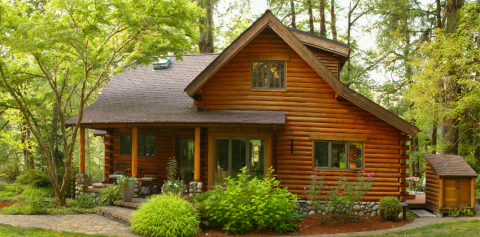Until the recent COVID-19 restrictions, the number of Vermont homes used as short-term rentals has ticked up each year, according to a recent analysis by Vermont Housing Finance Agency. In a typical month last year, about 8,000 homes were listed as short-term rentals across the state. Largely located in towns located near Vermont ski areas, homes rented for short-term stays comprise about 2.5% of the state’s total housing stock, according to data from AirDNA, a service that aggregates listings from Airbnb, VRBO, and other popular short-term rental companies.

Vermont Housing Finance Agency (VHFA) analyzed five years of short-term rental data as part of the 2020-2025 Vermont Housing Needs Assessment. The assessment was conducted for the Vermont Department of Housing and Community Development who is responsible for the state’s consolidated planning for housing programs. Most of the data used in the assessment, including information about short-term rentals, is available at the state, county and town level on the Vermont Housing Data website which is updated throughout the year by VHFA.
“Knowing how many Vermont homes are available as short-term rentals is critical to identifying changing patterns in property usage and all the factors that impact the housing market," remarked Josh Hanford, Commissioner of the Vermont Department of Housing and Community Development. “This assessment and the new online data tools will help us monitor trends and inform our ongoing work to address housing needs throughout the state,” Hanford explained.
The number of Vermont homes used in a typical month as short-term rentals increased by 12% between 2018 and 2019. Short-term renting of entire homes is a relatively recent practice in Vermont. In 2015, just over 1,000 homes statewide were listed as short-term rentals, according to AirDNA.
During the first half of May 2020, industry analysts reported an upturn in short-term rental bookings in large U.S. tourist destinations. If this pattern also holds true in Vermont, the COVID-19 pandemic is not likely to thwart the increasing popularity of Vermont short-term rentals.
Short-term rentals generate substantial economic activity for Vermont, for the hosts of the units, surrounding communities as guests visit shops, restaurants, and other businesses. On the biggest earning weekends in 2019, Vermont Airbnb hosts earned $15.1 million and served about 69,800 guests, according to paper published by Dartmouth University students earlier this month.
“Our assessment revealed that many of the short-term rental homes in Vermont are listed on AirBnB and similar sites only for selected nights each month,” remarked VHFA Executive Director Maura Collins. This can occur if a homeowner lists a home that is their primary, year-round residence as a short-term rental to tap the home’s earning potential as temporary lodging while the owner is away. “In these cases, short-term renting is not edging out a year-round renter, because the home is the primary residence of the owner,” Collins explained.
In a typical month, an estimated 2,700 Vermont homes are listed as short-term rentals for selected nights, but not for the entire month.
“Where we grow concerned is when we see that an owner can rent a home for just five nights before earning more than a landlord can earn in a month, housing Vermont’s workforce,” Collins continued. “We are excited we can now help the state hone in on the potential housing market impacts of short-term rentals,” she said.
In 2019, an estimated 5,300 homes, 1.8% of all Vermont homes, were used consistently throughout a typical month as short-term rentals. By comparison, 17% of the state’s housing stock is comprised of seasonal homes, according to Census Bureau estimates as of 2017. Next to Maine, this is the second-highest rate of seasonal homes in the nation.
Despite the growth of Vermont’s stock of seasonal homes, the number of homes occupied by year- round residents has changed very little since 2010, according to the 2020-2025 Vermont Housing Needs Assessment.

